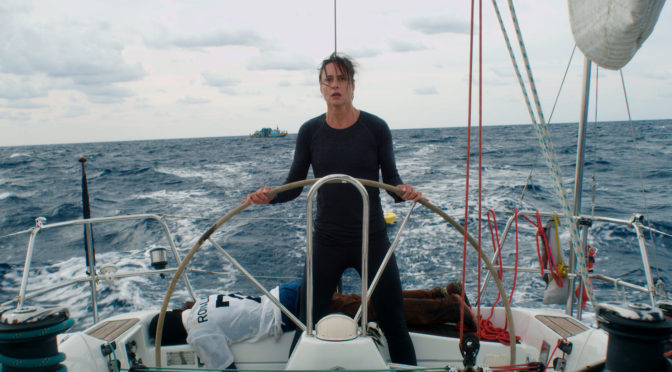 Wolfgang Fischer has put together, with the excellent performance of Susanne Wolff, a tense film – STYX – that uses a personal moral quandary to comment on wider global issues. The structure allows Fischer and Wolff to reflect upon the drama in a non-hyperbolic allegory. The world’s indifference to human suffering is quietly skewered, and how it goes against our empathetic instincts, whilst also encroaching on our supposedly overladen modern lives.
Wolfgang Fischer has put together, with the excellent performance of Susanne Wolff, a tense film – STYX – that uses a personal moral quandary to comment on wider global issues. The structure allows Fischer and Wolff to reflect upon the drama in a non-hyperbolic allegory. The world’s indifference to human suffering is quietly skewered, and how it goes against our empathetic instincts, whilst also encroaching on our supposedly overladen modern lives.
The film opens on a car accident, shot in an eerie manner, to which our lead character Rieke is the medical first responder. A chaotic and stressful job and experience, it sets up the sense of escape she is seeking as she sets sail for Ascension Island from Gibraltar (nicely established with the barbary macaques shorthand). Once out on the water, she encounters a sinking trawler overburdened with refugees and migrants. She is advised to steer clear, but finds a moral imperative to help, placing her in a dilemma.
“The anguish on Wolff’s face is palpable…”
Named after the river separating the land of the living and the land of the dead, as the main plot conflict comes into view this is the treacherous path Rieke stumbles upon. The anguish on Wolff’s face is palpable, and required given she is the only face we see for the vast majority of the film. Her conversations over the radio with the coastguard – who advise her to stay away from the stricken trawler – and a larger ship who offered hypothetical assistance to her – who indicate they will not get involved – raise tension in a low key manner. They act as a vehicle for the moral vice Rieke feels tightening on her, as well as a metaphor for the distance felt by people in the countries the trawler is presumably trying to navigate to.
Unlike a film that would be more event-driven, there is no artificial ticking clock injecting drama into proceedings. The drama comes fully from the desperate waving of those on the boat, the formal radio-speak indifference of the authorities, and the woe written across Wolff’s face. Although more character interaction drives some of the instances later, and a clinical horror in some of the final shots, the tone is set by these moments.
“The shots caught by Fischer and cinematographer Benedict Neuenfels feed into this slow burning play of plight […] beautiful and ominous”
The shots caught by Fischer and cinematographer Benedict Neuenfels feed into this slow burning play of plight. The boat sailing off, a tiny speck of white on deep blue ocean, below a light blue sky separated only by the horizon is no less visually satisfying for its familiarity. Dusk and twilight on the boat looks both beautiful and ominous, often framing Wolff in close up to highlight the isolation and remoteness. Having said that, the cabin-based camerawork early in the film is a little staid and pondersome, and comes off weakly next to this work on the deck and in wider shots.
STYX may also be named for the goddess of the same name, after whom Zeus named the binding oath deities took. The film places what we should have sworn to each other front and centre, and whether we have moved away from simple human compassion in the face of geopolitical hurdles. STYX strips that away to present a drama that is as contemplative as it is engrossing.

